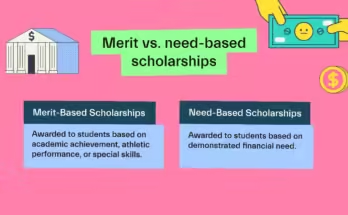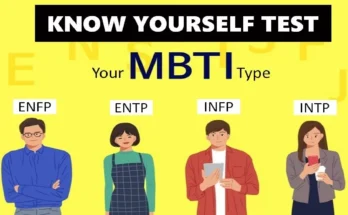Introduction
If you ask parents why they love living in California, good schools are usually near the top of the list. It’s no secret—some of the best high schools in the country are right here. These schools don’t just teach facts. They help kids figure out who they are and what they want to do next.
High school is a big deal. It’s where teens start making choices that shape their future. The right school can open doors, spark new interests, and build confidence.
How do schools get ranked? It’s not just about test scores. People look at grades, clubs, sports, college prep, and how welcoming the school feels. With so much variety, there’s a place for everyone in California.
How the Schools Were Ranked
Ever wondered what makes a school “the best”? Here’s what experts check:
Academics: SAT, ACT, AP, and IB results.
College Prep: Are students ready for what comes next?
Clubs and Sports: Is there something for everyone after class?
Diversity: Do students feel included and respected?
Sources like U.S. News & World Report and GreatSchools gather all this info. They look at numbers, but also at what makes each school special.
Overview of California’s Education System
California’s schools are as different as its cities. There are public schools, private schools, charters, and magnets.
Public Schools: Free, for everyone living nearby.
Charter & Magnet Schools: Some focus on science, arts, or languages. They might ask you to apply.
Private Schools: These charge tuition and sometimes offer smaller classes.
Some schools try out new teaching ideas. Others stick to tradition. You’ll find programs for science lovers, artists, and athletes. Of course, not every school has the same resources, but there’s a lot of choice.
The Top 10 High Schools: Detailed Profiles
1. Riverside STEM Academy (Riverside)
Background:
Started for students who love science and math. It covers grades 5–12.
Key Achievements:
Ranked #1 in California (2024).
Almost every student graduates.
Special Programs:
Advanced science and math.
Clubs for robotics and research.
Admission:
You apply, share your grades, and might get an interview.
2. Whitney High School (Cerritos)
Background:
Opened in 1976. Known for tough classes and a mix of students.
Key Achievements:
Always among the best in the U.S.
Many National Merit Scholars.
Special Programs:
Lots of AP and honors classes.
Debate and math teams.
Admission:
Requires a test and an application.
3. Science Academy STEM Magnet (North Hollywood)
Background:
A newer school focused on science and technology.
Key Achievements:
Top 3 in the state.
High test scores.
Special Programs:
Engineering and coding.
Science fairs and competitions.
Admission:
Apply through the magnet system.
4. Oxford Academy (Cypress)
Background:
Opened in 1998. Known for academics.
Key Achievements:
Regularly in the top 5.
High AP pass rates.
Special Programs:
AP Capstone, STEM, and leadership.
Admission:
Entrance exam and grade review.
5. California Academy of Mathematics and Science (CAMS) (Carson)
Background:
On the CSU Dominguez Hills campus. Focuses on STEM.
Key Achievements:
Nationally ranked.
Many students head into science careers.
Special Programs:
AP classes and college courses.
Science research.
Admission:
Application and sometimes an interview.
6. Harbor Teacher Preparation Academy (Wilmington)
Background:
Located on a college campus. Prepares students for teaching and STEM.
Key Achievements:
High graduation rates.
College credits earned in high school.
Special Programs:
Dual enrollment.
Teacher training.
Admission:
Application, especially for those interested in teaching.
7. Lowell High School (San Francisco)
Background:
San Francisco’s oldest public high school.
Key Achievements:
Always highly ranked.
Famous alumni.
Special Programs:
AP and honors classes.
Arts and sports.
Admission:
Selective, based on grades.
8. Pacific Collegiate Charter (Santa Cruz)
Background:
A charter school for grades 7–12, focused on the liberal arts.
Key Achievements:
Top charter in California.
High college acceptance.
Special Programs:
AP for all.
Arts and language programs.
Admission:
Lottery system.
9. Lynbrook High School (San Jose)
Background:
Known for strong academics and diversity.
Key Achievements:
High rankings.
Many students go to top colleges.
Special Programs:
AP and honors classes.
Music and STEM clubs.
Admission:
Mostly local, some transfers.
10. Dr. T.J. Owens Gilroy Early College Academy (GECA) (Gilroy)
Background:
On the Gavilan College campus. Students earn college credits early.
Key Achievements:
Top 10 for college readiness.
Many graduate with an associate degree.
Special Programs:
Dual enrollment.
STEM and arts focus.
Admission:
Application, especially for motivated students.
Comparison Table of Key Metrics
| School Name | Location | Avg. SAT/ACT Scores | Graduation Rate | Student-Teacher Ratio | College Admission Rate |
| Riverside STEM Academy | Riverside | 1400/32 | 99% | 22:1 | 96% |
| Whitney High School | Cerritos | 1450/33 | 99% | 25:1 | 98% |
| Science Academy STEM Magnet | North Hollywood | 1390/31 | 98% | 21:1 | 95% |
| Oxford Academy | Cypress | 1420/32 | 99% | 23:1 | 97% |
| California Academy of Mathematics & Science | Carson | 1430/32 | 95% | 27:1 | 95% |
| Harbor Teacher Preparation Academy | Wilmington | 1370/30 | 97% | 24:1 | 94% |
| Lowell High School | San Francisco | 1410/32 | 98% | 24:1 | 96% |
| Pacific Collegiate Charter | Santa Cruz | 1380/31 | 97% | 19:1 | 95% |
| Lynbrook High School | San Jose | 1440/33 | 99% | 22:1 | 97% |
| Dr. T.J. Owens Gilroy Early College Academy | Gilroy | 1360/30 | 98% | 20:1 | 94% |
Tips for Choosing the Right High School
Picking a school is personal. Here are some things to think about:
What are your interests? Science, art, sports—find a school that fits.
How far is it? A long drive can be tiring.
What’s the atmosphere? Visit if you can. Trust your gut.
Are there clubs and sports you like? They make school more fun.
Is the school welcoming? Feeling included matters.
If you can, go to open houses. Talk to students. Ask lots of questions.
Frequently Asked Questions
What’s the difference between public, private, and charter schools?
Public schools are free and open to everyone. Private schools charge tuition. Charter schools are public, but run with a bit more freedom.
How do I apply to these schools?
Public schools are usually based on where you live. Charters and magnets need an application or lottery. Private schools have their own process.
Can international students attend?
Some private and charter schools accept international students. Ask each school for details.
Do rankings matter for college?
They help, but colleges care more about your grades and activities.



